Argos Greece is a small town, located in the fertile plain of Argolis in the eastern Peloponnese, famous for its aromatic oblong melons. The lesser-known town also has a very significant ancient history. After all, it is close to spectacular Greek destinations such as Nafplion, Nemea, and the UNESCO sites of Mycenae, Epidaurus, and Tiryns.
Argos Greece is one of the oldest continuously inhabited cities in the world and the oldest in Europe. It has been inhabited for the past 7,000 years.
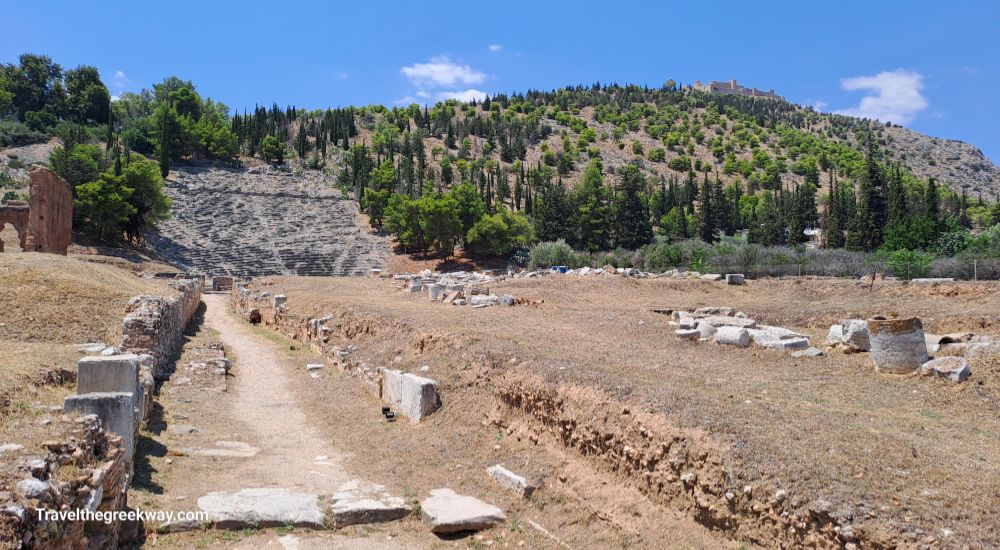
The modern town of Argos is built on top of the ancient classical Argos all around Larissa Hill. On top of the hill, stands the ancient Acropolis of Argos, visible from everywhere in the town. On the slopes of the hill, lie also the large archaeological site of Argos containing impressive Greek and Roman ruins.
If you are wondering why should you visit Argos Greece I would summon up the reasons:
- Argos has a significant history and imposing monuments to visit.
- As it is under the tourist radar, it has the ambiance of a real Greek small-town place.
- It is a great and much cheaper alternative to Nafplion hotels which are hardly 12 km away.
So are you ready to explore Argos? Let’s Go!
*Some of the links in this post are affiliate links. That means I may make a commission if you click and buy. The commission comes at no additional cost to you.
My Latest Video on Argos
Having a car to explore Argos in Greece is a game-changer. It lets you roam freely, checking out ancient sites like the theater and fortress hassle-free. Plus, it opens up opportunities to discover nearby beaches and archaeological wonders for an epic adventure! 😀
Top Things to Do in Argos Greece
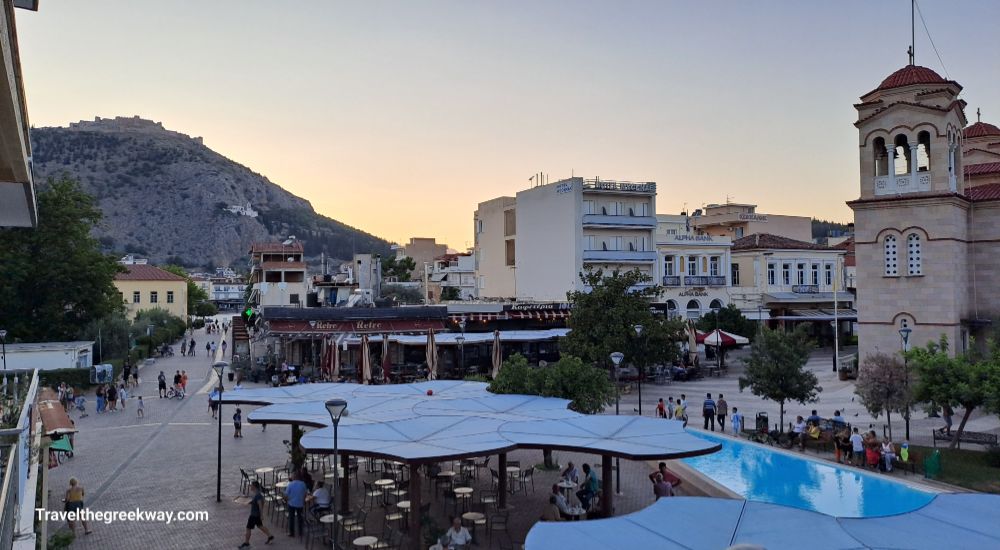
You can totally soak up the charm of Argos in just a few hours, making it perfect for a morning adventure! Keep in mind though, the archaeological site closes at 15:30, so it’s best to plan your visit early to make the most of your time exploring this fascinating destination.
1. Agios Petros Square of Argos Greece
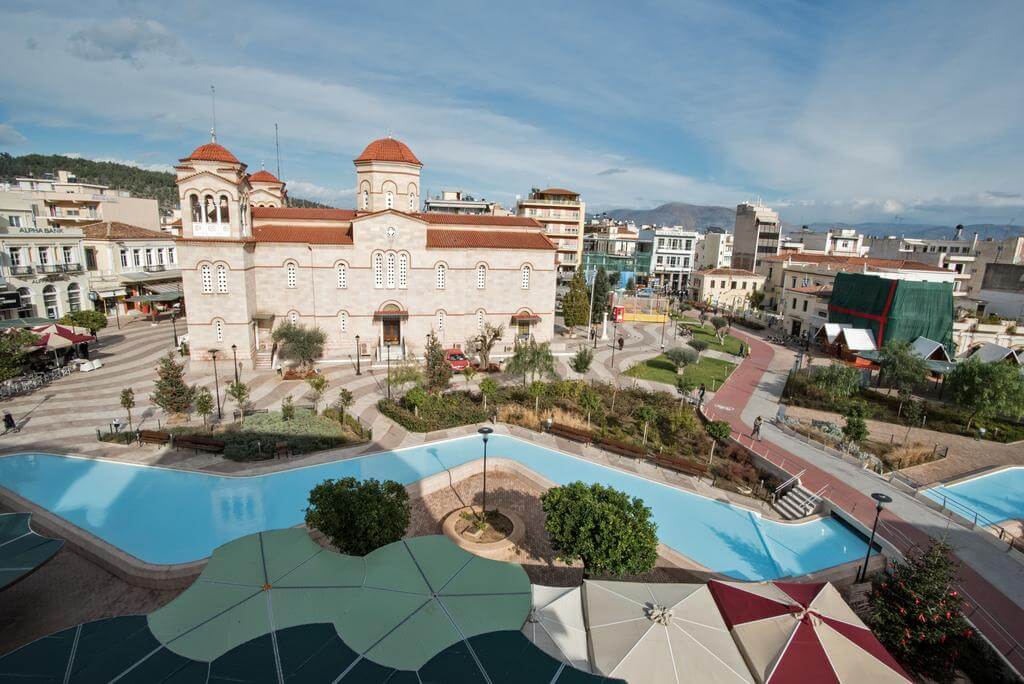
Agios Petros is the most impressive and central square of the town, completely renovated in 2017. It houses the city’s cathedral, Agios (Saint) Petros which was built in 1840.
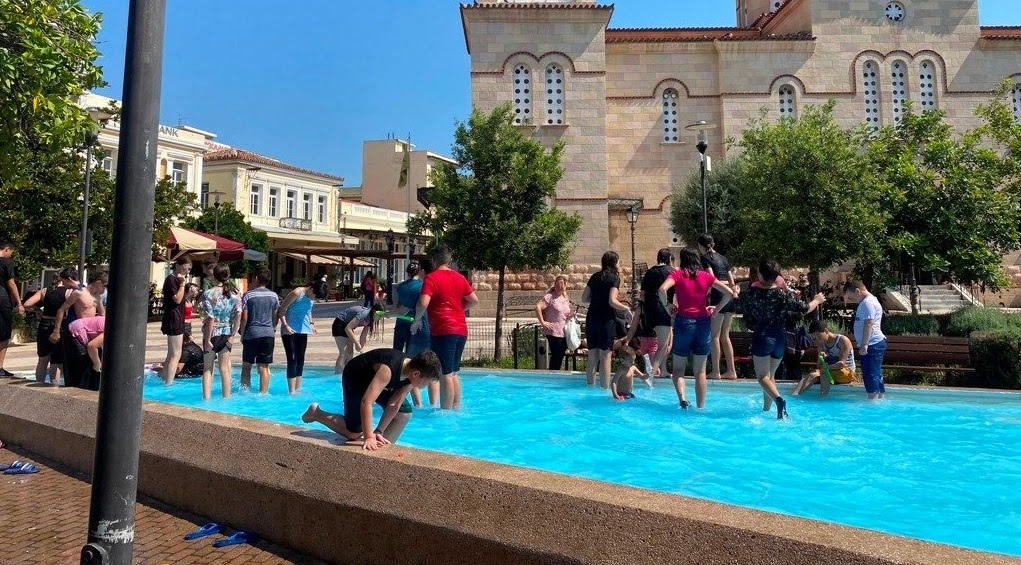
In front of the church, there is a long pond, more like a river that encircles the square with small green islets. During the summer, the square is the most popular place to be in Argos. There is also a custom, when the school finishes in June, pupils go into the pond and throw to each other water. Celebrating the beginning of the summer in a fun way!
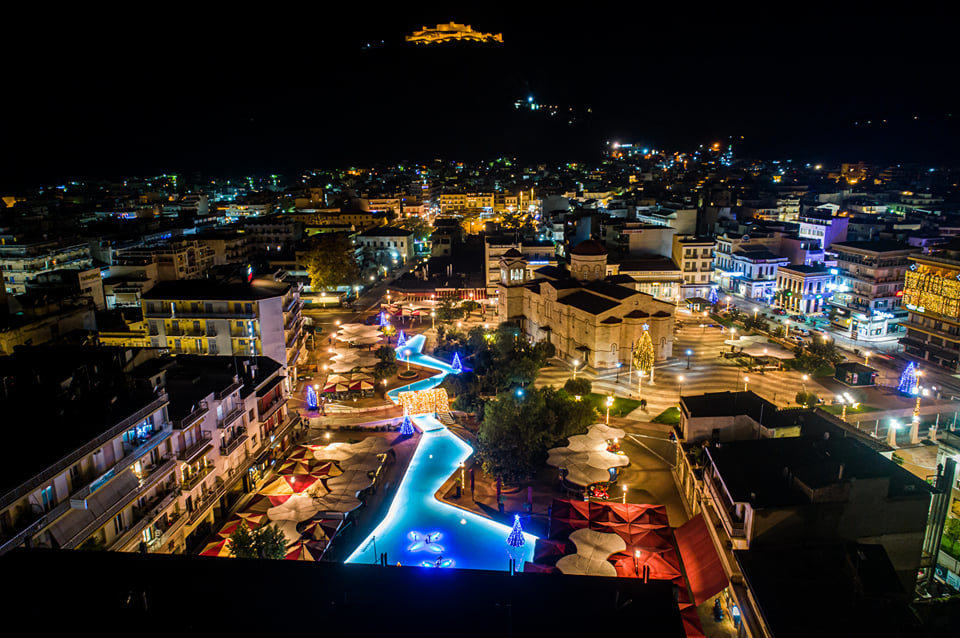
If you are also looking to dabble in culinary delights, here’s the place to do it – as some of the town’s best cafes, shops, and restaurants are located right here. The Argos main square is a charming place filled every day with families and visitors creating a vibrant and friendly atmosphere.
2. Archaeological Site of Argos Greece
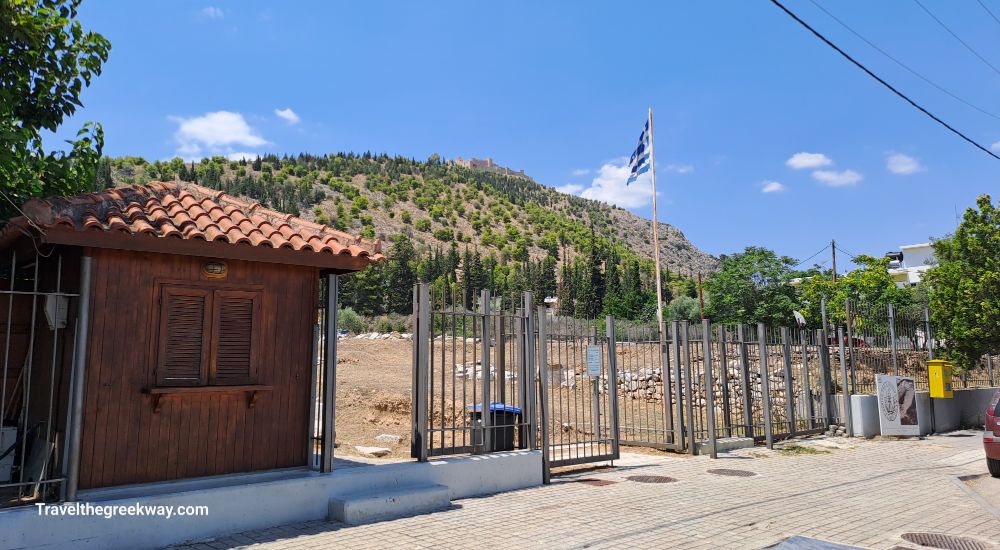
You can easily get to the archaeological site of Argos as it is only a few minutes walk from the center. The ancient complex includes Mycenaean tombs (14th to 13th century BCE), an impressive ancient theatre, ruins of the Roman baths or thermae (2nd century CE), and, around the city, parts of the ancient, Cyclopean citadel walls.
Mycenean Mythology Tip: Amphiaraus was king of Argos, a seer with healing powers often called the second Asclepios. He participated unwillingly in the war against Thebes as he had predicted that he would die there, which he did. There is a Sanctuary in Oropos in Athens dedicated to him, the Amphiareion.
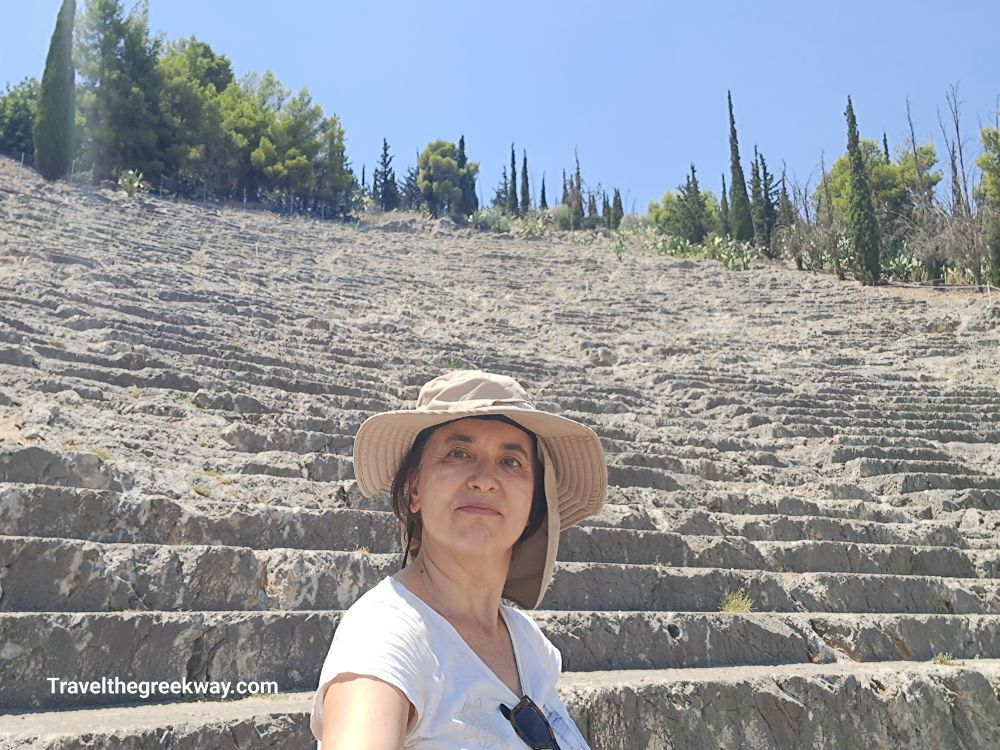
The site is open daily between 8.30-15.30 with €3 entrance.
The Ancient Theater of Argos Greece
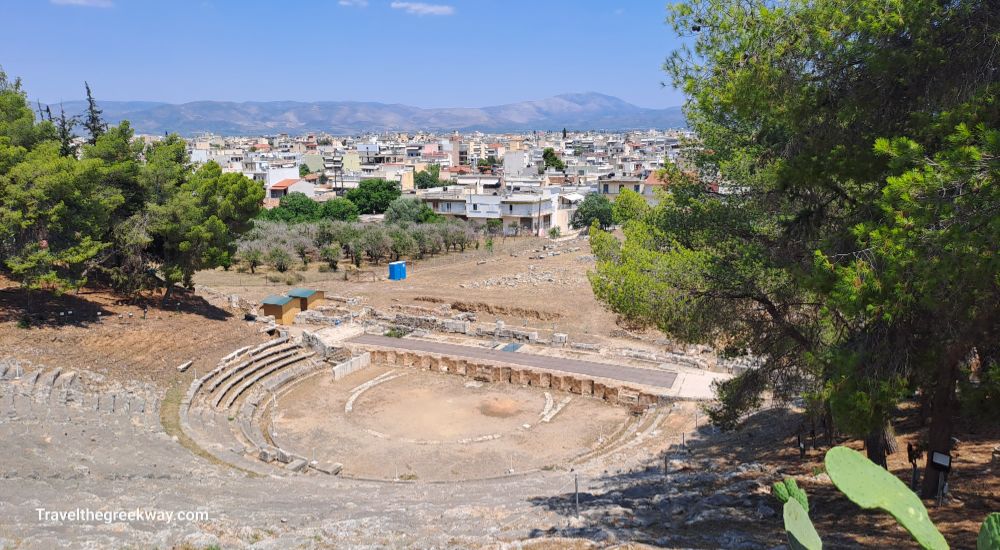
The ancient theater was built in 300-250 BCE with a capacity of 20,000 spectators. It was one of the biggest Greek ancient theaters with 81 rows of seats. Throughout its long history, it hosted the musical and dramatic competitions of the Nemean Games, as well as contests in honor of Hera.
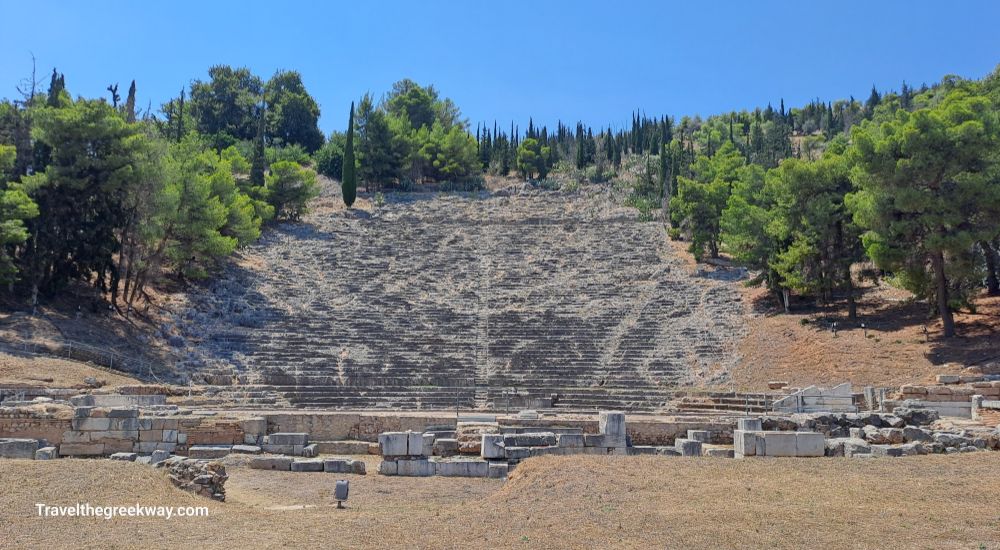
The theater ceased to operate in the 5th – 6th century CE, but a large portion of its hollow remained visible and was depicted by explorers who visited Argos during the 18th and 19th centuries. The excavations by the French Archaeological School brought back to light the city’s prominent monument once again.
Today, cultural events are held at its premises during the summer months.
The Asclepion of Argos: Roman Bathhouse
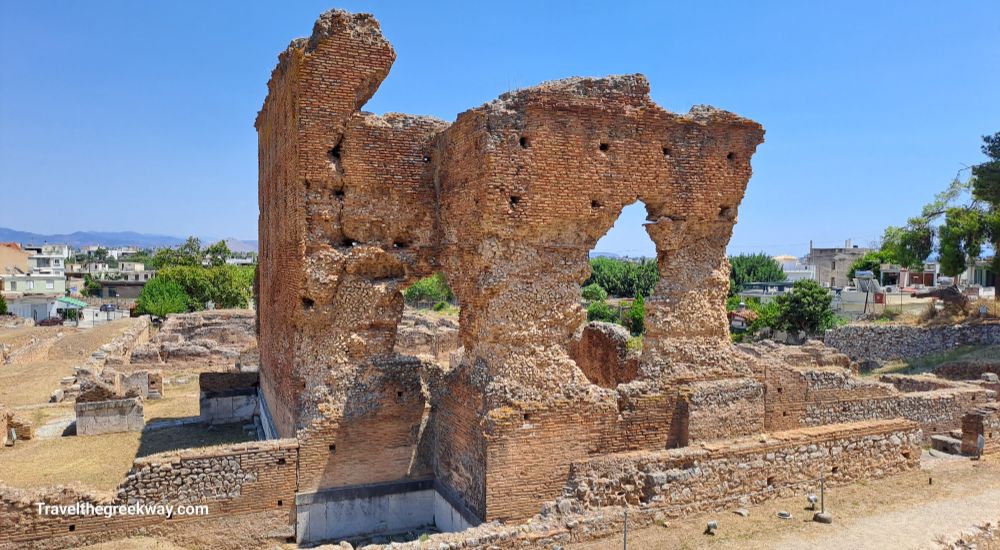
Across from the ancient theater stand the ruins of the Roman Baths of Argos.
During the reign of Emperor Hadrian (117-138 CE), a luxurious water therapy complex was established in this area under the patronage of Asclepius. The Baths of Argos served as places of gathering, social interaction, exercise, and recreation for the citizens.
A preserved stone wall still stands today, reaching a height of 11 meters. The Baths operated until the early Christian times (5th-6th century CE) and were soon after abandoned.
The Ancient Agora
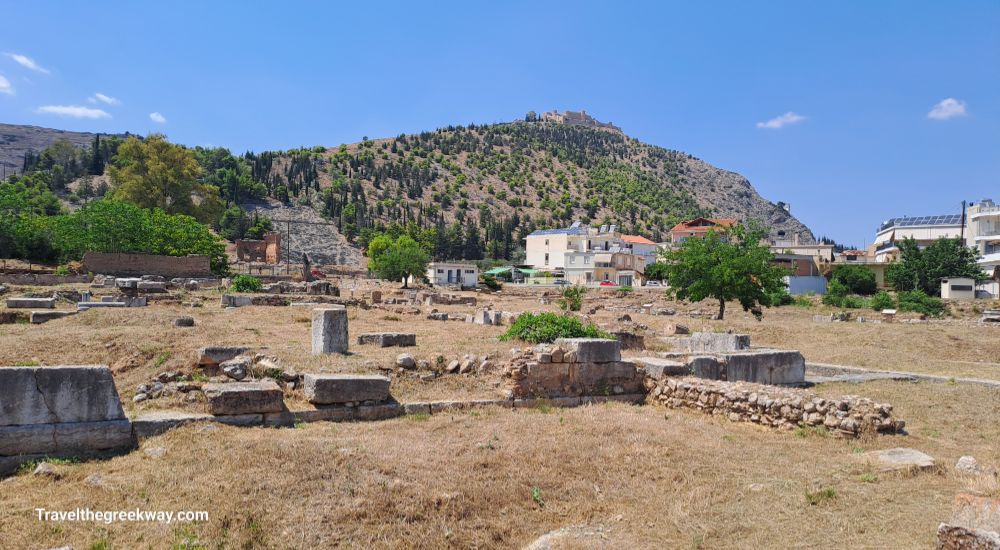
The few remains of the ancient agora of Argos lie right across from the entrance to the ancient theater and were developed in the 6th century BCE. Excavations in the area have uncovered a bouleuterion, built in 460 BCE. when Argos adopted the democratic regime, a sanctuary of Apollo Lyceus, and a palaestra.
Unfortunately, there are not so many things to see in the Argos Agora, unlike the Ancient Agora of Athens. However, as the entrance is included in the €3 ticket, I suggest you go around and read the very interesting information plaques.
Tips for Visiting the Archaeological Site of Argos
Is the Site Accessible?
No, it is not.
Is there a Shop/WC?
No, there are not.
How much time do I need for the Argos Site?
You should plan to spend around half an hour inside the site.
Can I drink or eat inside the site?
You are not allowed to eat or drink anything inside any archaeological site in Greece, only water is allowed to carry around.
Do I need cash or do they take credit cards for the entrance?
You can pay either with cash or with a credit card at the entrance of the site.
3. The Monastery of Panagia (Katakekrimeni)
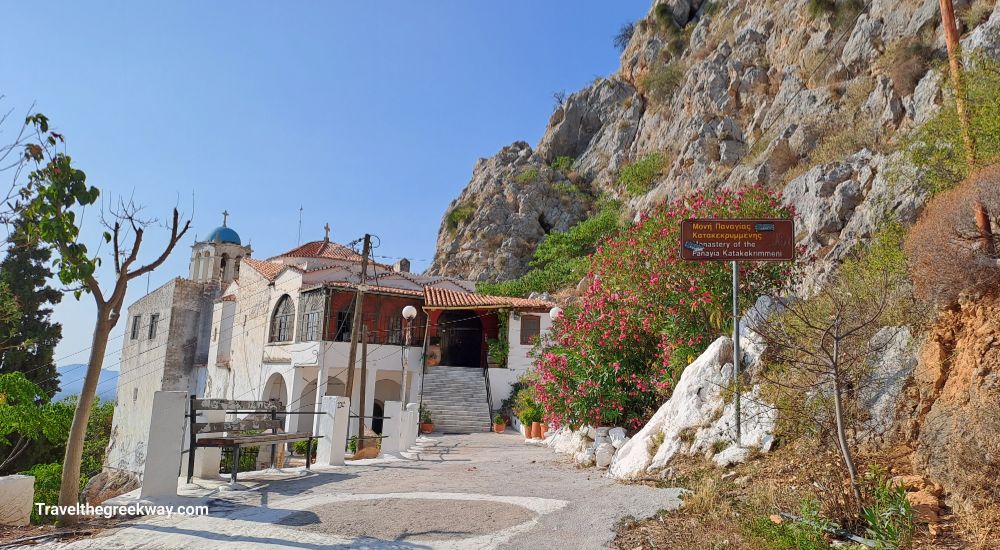
If you decide to drive to the castle, which is just 5 km from Argos, you will first arrive at the monastery of Panagia. The monastery is built on the rock under the castle among cypress trees and is also called Portokalousa (Orange). There is a local custom and every November 21st, the Argives throw oranges to the newlyweds! I haven’t got a clue where this custom comes from 😀
There are not many records about the monastery’s founding, but it is believed to have already existed during the 10th century.
4. The Castle of Larissa in Argos Greece
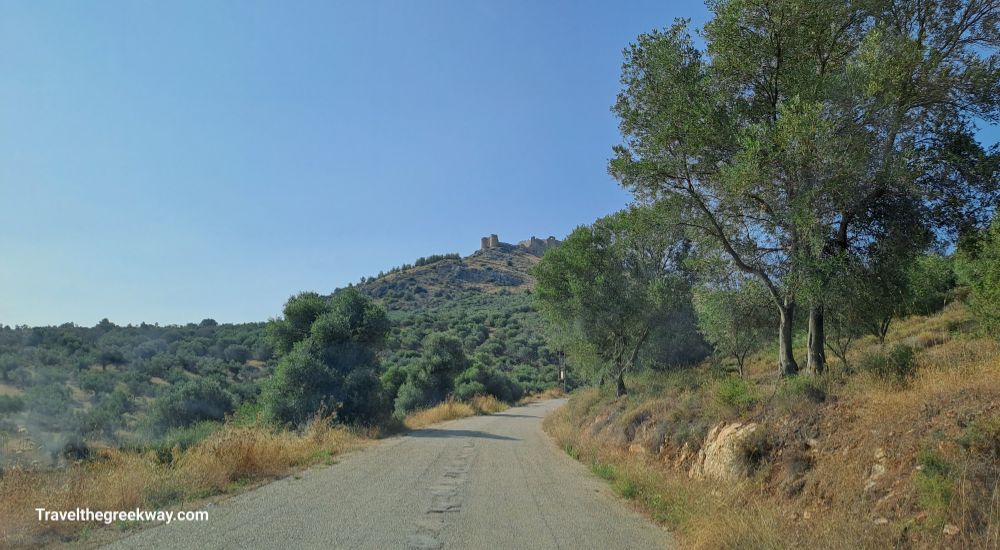
The Castle of Larissa or else the ancient Acropolis of Argos, is one of the best places in the area to enjoy a truly unforgettable view.
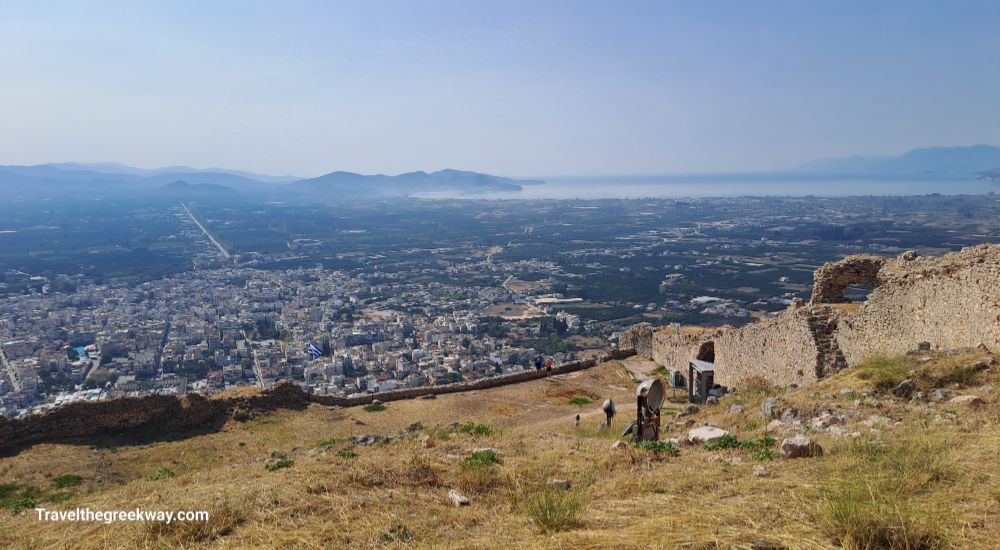
As it’s built at Argos’ highest spot (289 m.), you’ll also be able to enjoy panoramic views of the town, the Argolic Plain to Nafplion, and the Argolic Gulf. The Castle has always been a fortified observatory and the last line of defense for Argos.
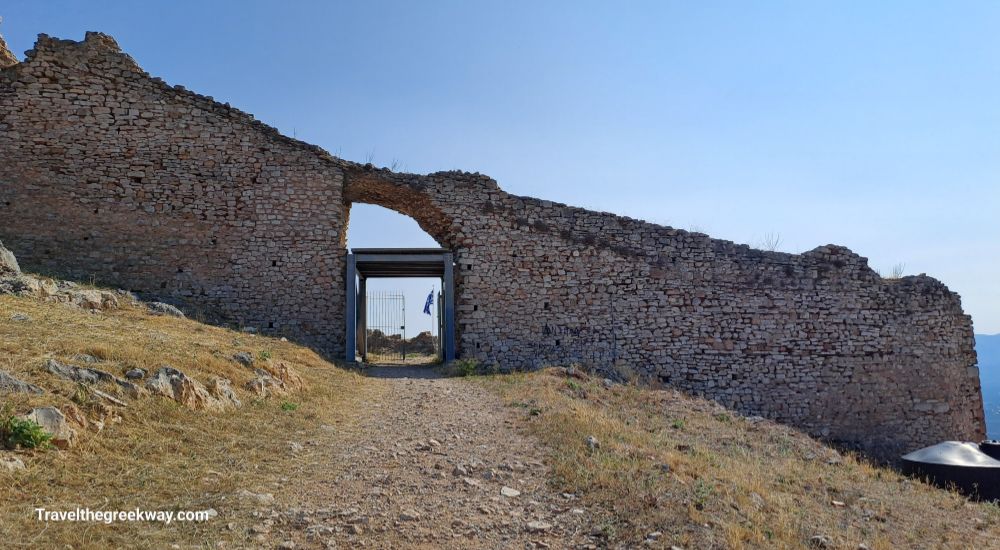
The Castle was probably occupied since the Early Bronze Age and was very prominent since Mycenaean times (c. 1300–1200 BCE).

As you roam in the ruins of the once mighty castle, you will notice Mycenean, Classical, Roman, Frankish, Byzantine, and Ottoman traces, up to the period of the Greek Revolution of 1821 (there are signs). The last battle was in June 1822 between Ottoman Dramalis and the Greeks.
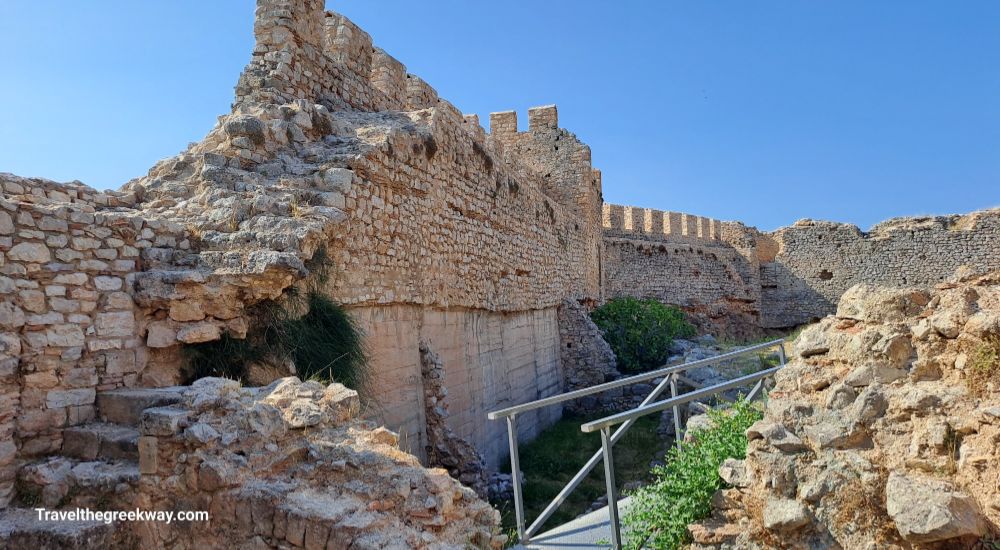
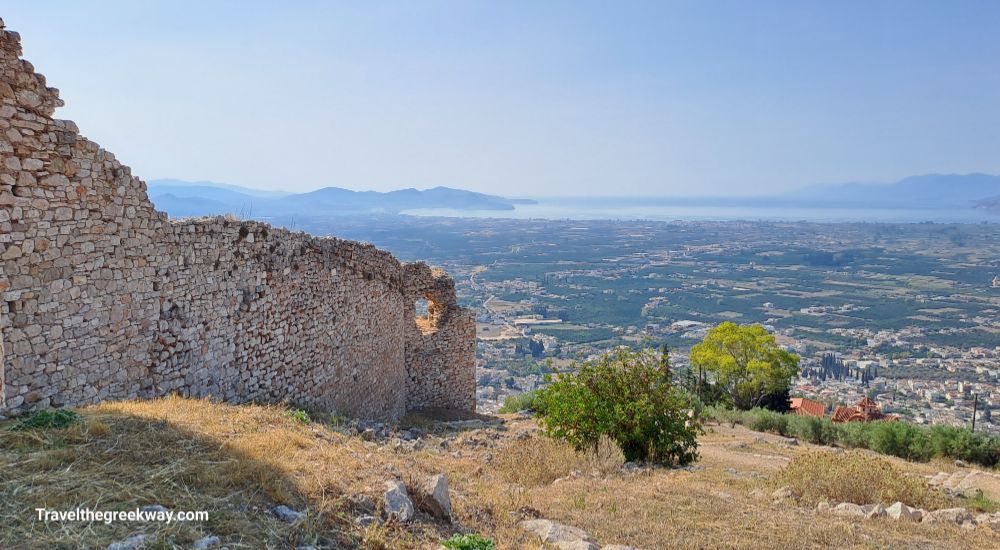
The best time to visit is right before sunset when the Argive Plain looks golden from the rays of the sun. Free entrance.
5. Church of Agios Konstantinos
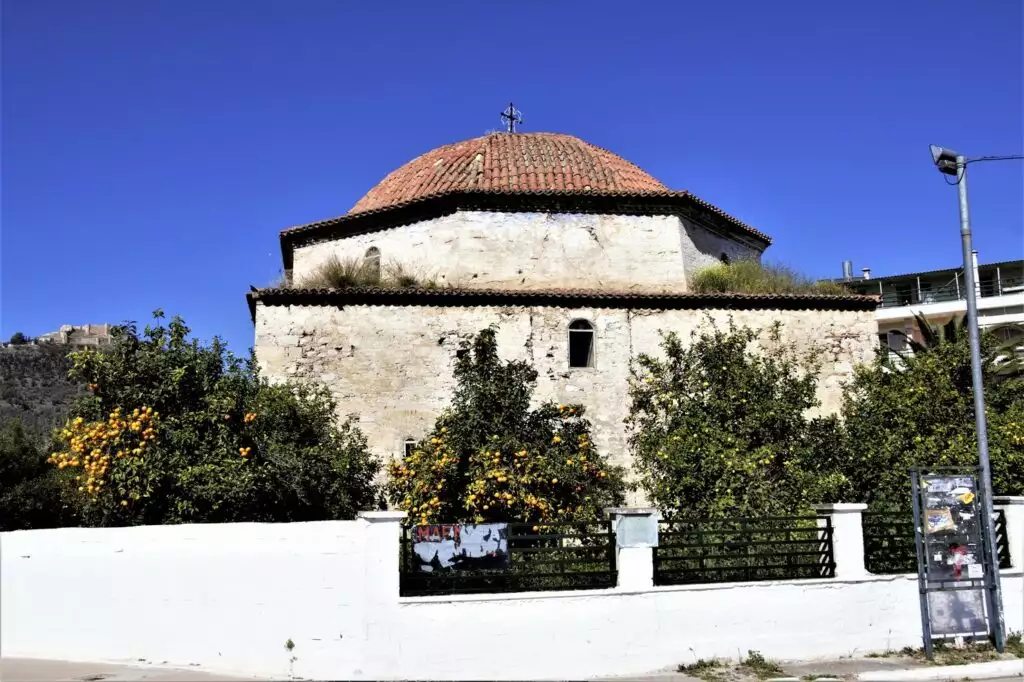
The Church of Agios Konstantinos was built in a significant spot for the religious life of Argos since ancient times. According to ancient sources, on the same spot there was a temple dedicated to Nikephoros Aphrodite, while a little further west, the remains of an important Early Christian basilica have been uncovered.
The building you see today used to be a mosque built between 1570 and 1600, and is one of the oldest Ottoman mosques. In 1871, after actions taken by the infantry lieutenant Ioannis Zois, the monument was converted into a Christian church dedicated to the memory of the saints Konstantinos and Helen.
6. The Barracks of Kapodistrias
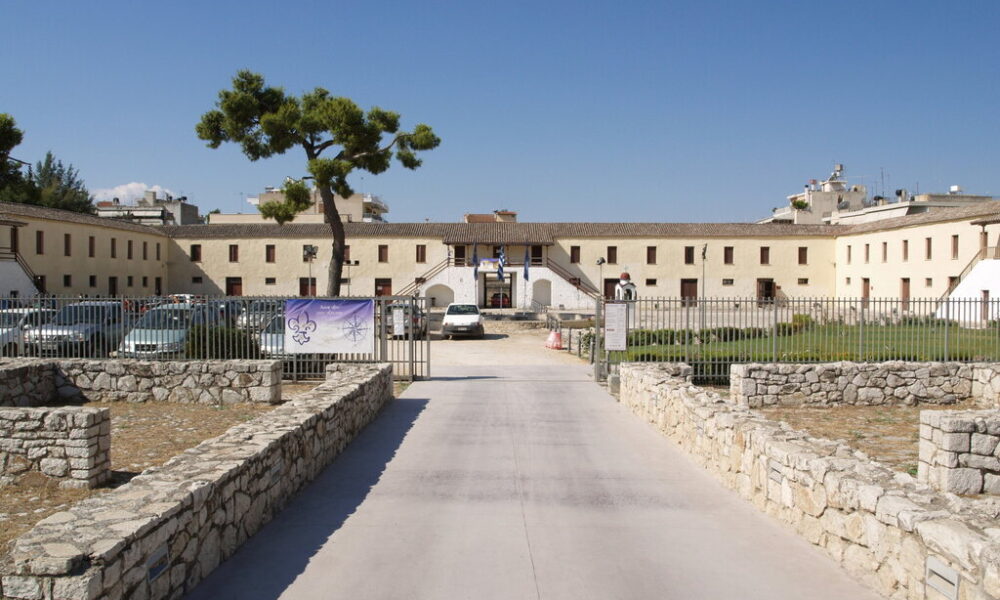
Count Ioannis Antonios Kapodistrias was elected as the first head of state of independent Greece in 1827. He served as Governor of Greece between 1828 and his assassination in Nafplion in 1831.
The long building in the shape of the Greek letter Π, stands in the center of modern Argos and was built in the 1690s by the Venetians as a hospital. During the Ottoman occupation, it served as a market (Bezesteni) and a post office. During the Greek War of Independence, the building was significantly damaged but was repaired by Kapodistrias, who turned the building into a cavalry barrack.
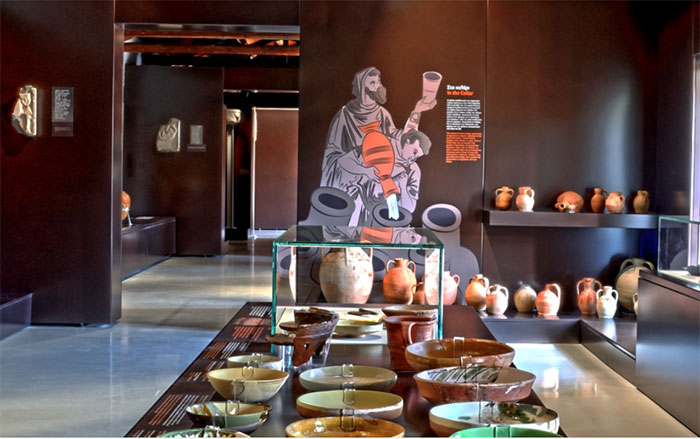
Today it houses the important Byzantine Museum of Argolis and the municipality of Argos organizes often musical events at its wide court.
7. The Archaeological Site of Heraion
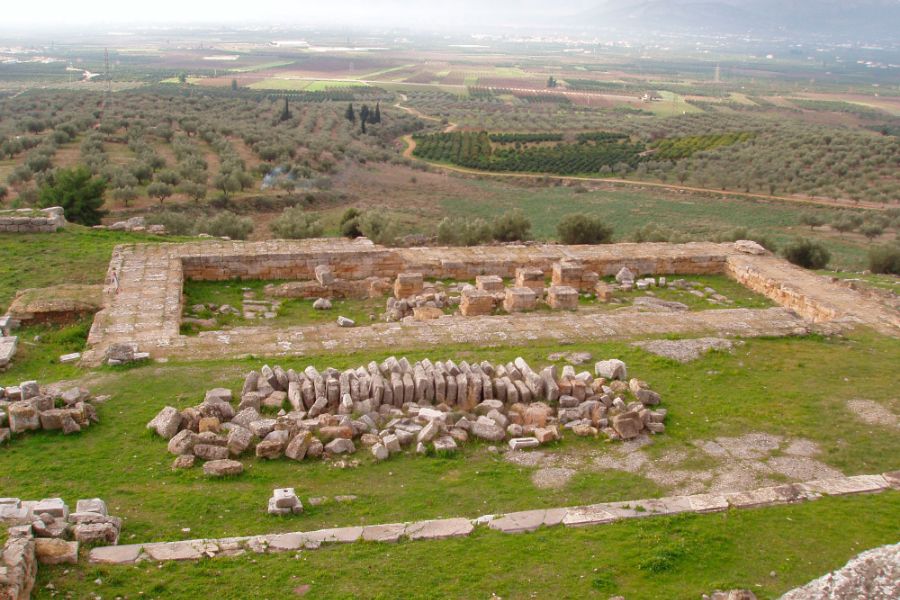
8 Km from Argos, you can visit the Heraion, a sanctuary dedicated to the goddess Hera, the patroness of the city-state of Argos. Heraion served as its official religious center, despite being far from the city.
The grand flourishing of the sanctuary took place in the 5th century BCE and it continued to function until the later Roman times, as confirmed by the traveler Pausanias (2nd century CE).
Open daily between 8.30-15.30 with free entrance.
Other Heraion Sanctuaries in Greece:
- UNESCO-listed Heraion of Samos Island
- Hera Akraia temple in Loutraki, Peloponnese
- The Temple of Hera inside the Ancient Olympia Archaeological site
8. Explore Nafplion Town
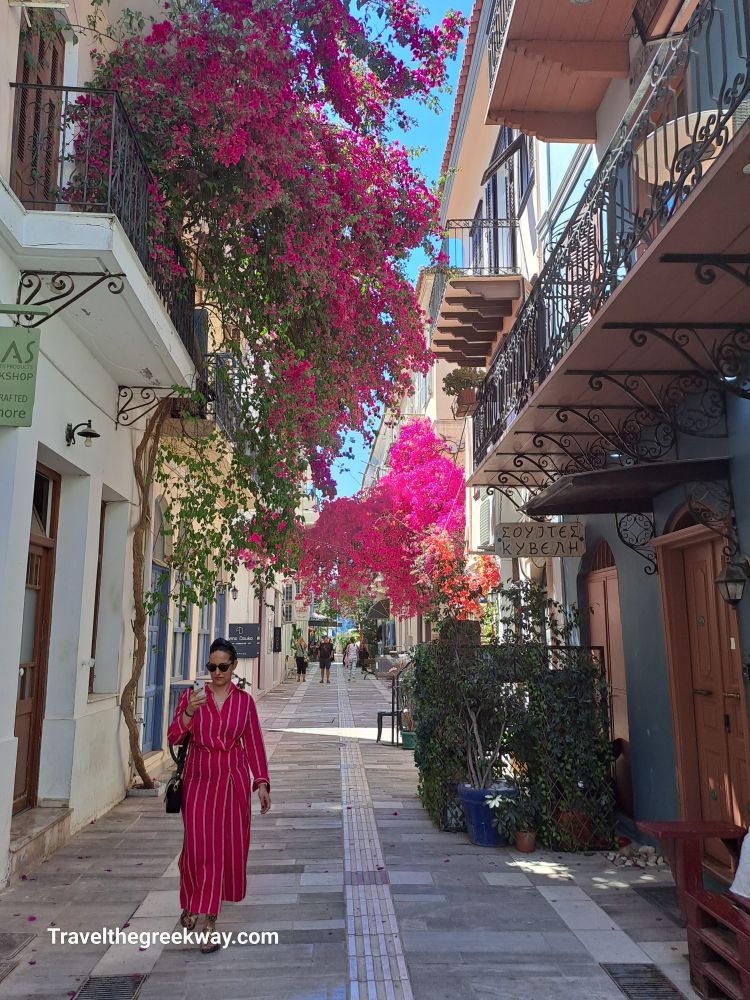
Nafplion is one of the most beautiful towns in Greece, with narrow cobblestone alleys, imposing castles, and stylish boutique hotels. It is only 12 km from Argos and is a wonderful, popular place to have as a base for your Peloponnese tour.
9. Discover the Acropolis of Tiryns
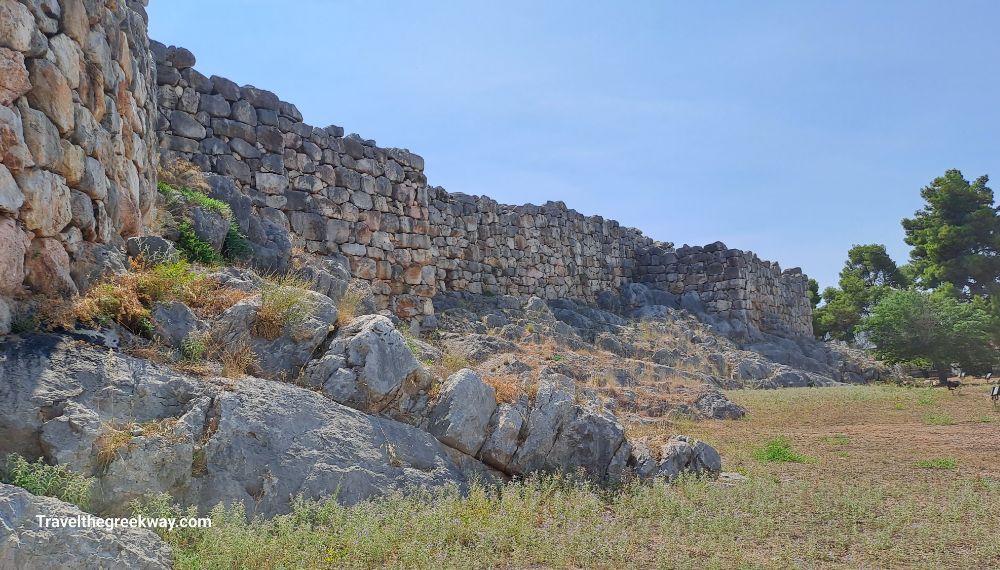
The UNESCO-listed Mycenaean Acropolis of Tiryns is a fine example of Mycenaean palatial architecture and fortification. It is situated 20 km southeast of Mycenae, 9.5 km east of Argos, and 38 km west of the ancient Theater of Epidaurus.
10. Book an organized Tour
Below are some of the top tours in the Peloponnese. Don’t forget to plan when visiting Argos and Nafplion, they are popular throughout the year!
Top Activities and Tours near Argos and Nafplion:
- Sailing Cruise in Nafplio | Meal Included – Best Sailing Trip
- Mycenae, Epidaurus, Nafplio full-day private tour from Athens – Badge of Excellence
- 4-Day Classical Greece Tour: Epidaurus, Mycenae, Olympia, Delphi, Meteora – Badge of Excellence
- Wine Tour to Nemea And Nafplio – Highly Rated
Argos Greece FAQ
Where to Stay in Argos
I stayed at the modest but spotlessly clean Morfeas Hotel (budget, family-friendly, breakfast) with a view of the impressive main square of Argos and the Castle of Larissa. As I was visiting during July, when it is really hot in the Peloponnese, I appreciated the powerful air conditioning. The kind owner also helped me park very close to the hotel – which was fantastic! – as the center of Argos has a parking issue.
Find out about prices and availability for Morfeas Hotel on Booking or Expedia.
How to Get to Argos Greece
You can go to Argos using public buses (KTEL) but you will lose all the fun visiting all those sites, monuments, towns, and beaches in the area.
For that reason, I strongly encourage you to rent a car to move around. I use Discover Cars (when I do not have my old but reliable car) to rent affordable, new cars at the best market prices.
Survival Tips for Argos
- Argos is one of the warmest places in the Peloponnese, so always carry a lot of water with you.
- You will find plenty of traditional Greek cuisine and also plenty of cafes and bars in the city where you can relax and enjoy a coffee or a glass of wine.
- I always wear very light clothes, hats and comfortable shoes like Bronax non-slip slippers.
Final Thoughts on Argos
Argos is a unique Greek town, a blend of history, culture, and modernity. If you have plenty of time on your hands, I encourage you to explore the hidden gem that is Argos, Greece.
Read next:
Plan My Trip to Greece
Do you need a custom travel itinerary or a transfer within Greece? Are you traveling solo, with your family or friends and need a tailor-made multi-day tour or a transfer?
If yes, please visit my dedicated Plan My Trip Page for a free itinerary!
Did you visit Argos? Let me know what you think about visiting Argos in the comments, I’d love to hear whether I managed to get it onto your bucket list! Till next time, Evgenia❤️
Essential Travel Info for Greece
- ‘Hello’ and ‘Thank You’ in Greek: “Ya sou” and “Efharisto”
- Booking.com: I use Booking.com mostly for Europe. It has over 1 Million properties to choose from, including everything from hotels to apartments and even hostels. And free cancellation!
- Expedia: I use Expedia for the best hotel descriptions and amenities and a rewards points system for the rest of the world.
- All-Inclusive Resorts in Greece
- FerryScanner to book ferries to the Greek Islands
- Rent an Affordable Car in Greece
- Athens Metro Website (timetables and ticket info)
- Map of Athens Metro
- Trains (Hellenic Train)
- Public Buses KTEL
- Get Your Guide: For all your day or multi-day tours and city guide needs, I use Get Your Guide
- Emergency Numbers Anywhere in Greece: AMBULANCE 166 – FIRE 199 – POLICE 100– EMERGENCY NUMBER 112
